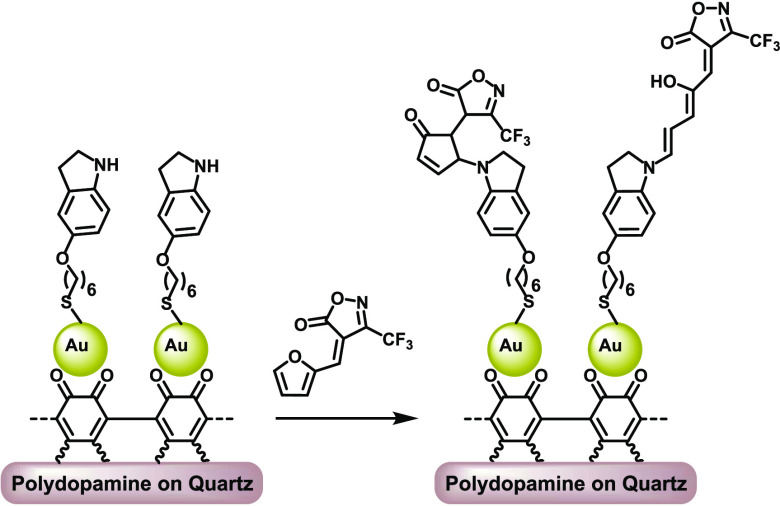- Record: found
- Abstract: found
- Article: found
Construction and Properties of Donor–Acceptor Stenhouse Adducts on Gold Surfaces

Read this article at
Abstract

The construction of a donor–acceptor Stenhouse adduct molecular layer on a gold surface is presented. To avoid the incompatibility of the thiol surface-binding group with the donor–acceptor polyene structure of the switch, an interfacial reaction approach was followed. Poly(dopamine)-supported gold nanoparticles on quartz slides were chosen as substrates, which was expected to facilitate both the interfacial reaction and the switching process by providing favorable steric conditions due to the curved particle surface. The reaction between the surface-bound donor half and the CF 3-isoxazolone-based acceptor half was proved to be successful by X-ray photoelectron spectroscopy (XPS). However, UV–vis measurements suggested that a closed, cyclopentenone-containing structure of the switch formed on the surface irreversibly. Analysis of the wetting behavior of the surface revealed spontaneous water spreading that could be associated with conformational changes of the closed isomer.
Related collections
Most cited references51
- Record: found
- Abstract: not found
- Article: not found
Self-assembled monolayers of thiolates on metals as a form of nanotechnology.
- Record: found
- Abstract: found
- Article: not found
Polydopamine Surface Chemistry: A Decade of Discovery
- Record: found
- Abstract: not found
- Article: not found